In the era of digitalization and fierce competition, online casinos rely on accurate data to make informed managerial decisions.
Analyzing key performance indicators (KPIs) allows operators not only to assess the current state of their business but also to predict trends, optimize marketing expenses, and enhance customer satisfaction.
If you are considering launching an online casino, it is crucial to understand that success in this industry depends not only on selecting the right platform and game provider but also on effectively managing key performance metrics.
Without in-depth data analysis, a casino may quickly face high player acquisition costs and low profitability. Therefore, incorporating an analytical approach from the planning stage is essential to optimizing business processes and ensuring long-term growth.
This article explores the key metrics necessary for the sustainable development of an online casino.
Key KPIs for Online Casinos
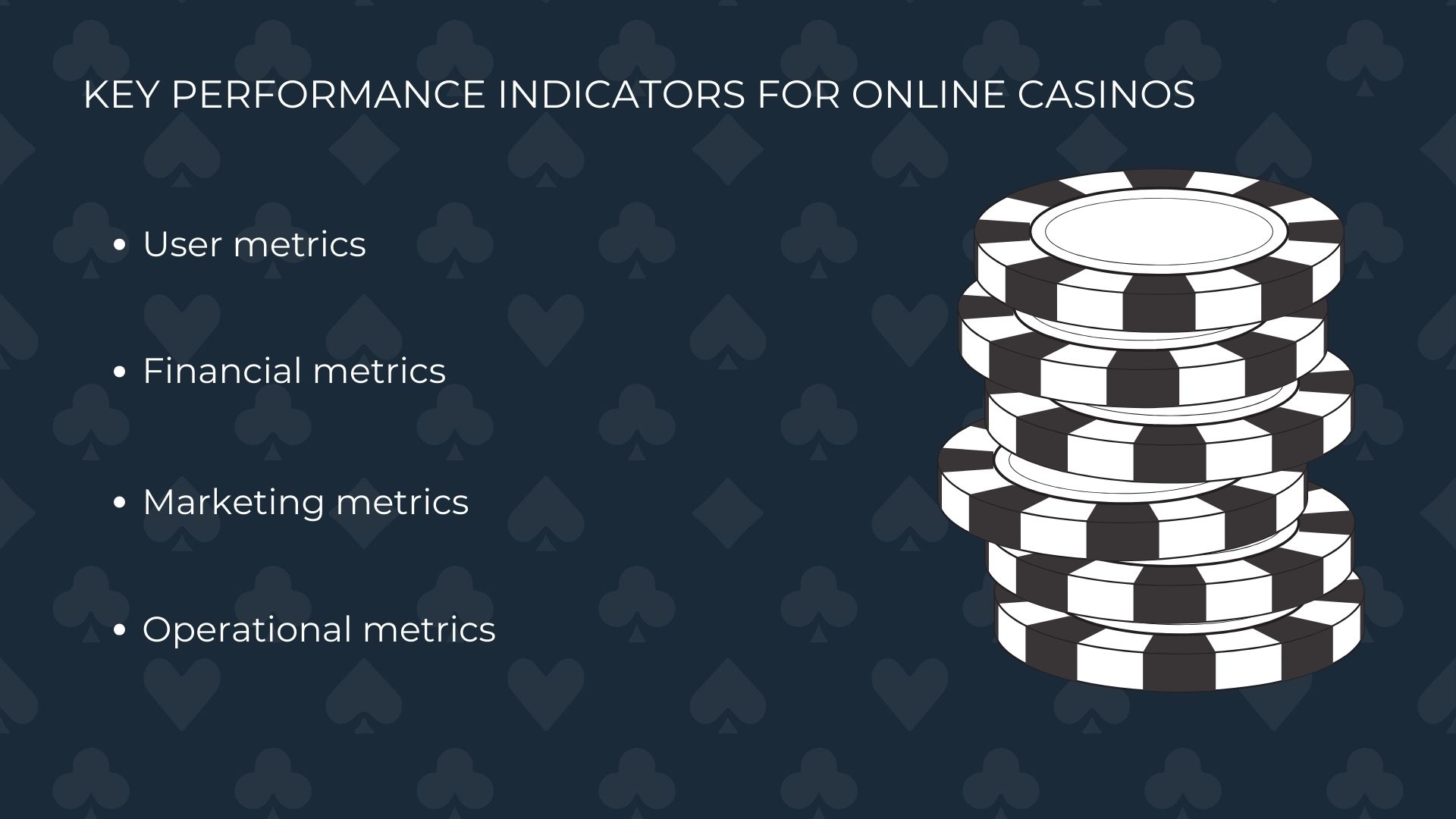
Key performance indicators are quantitative parameters that reflect a business’s performance. In the online gambling industry, KPIs are generally divided into the following categories:
- User metrics
- Financial metrics
- Marketing metrics
- Operational metrics
This approach allows for a detailed analysis of each aspect of casino operations and enables timely strategic adjustments. It is also useful for those looking to buy a ready-made online casino, helping them accurately evaluate a potential investment.
User Metrics
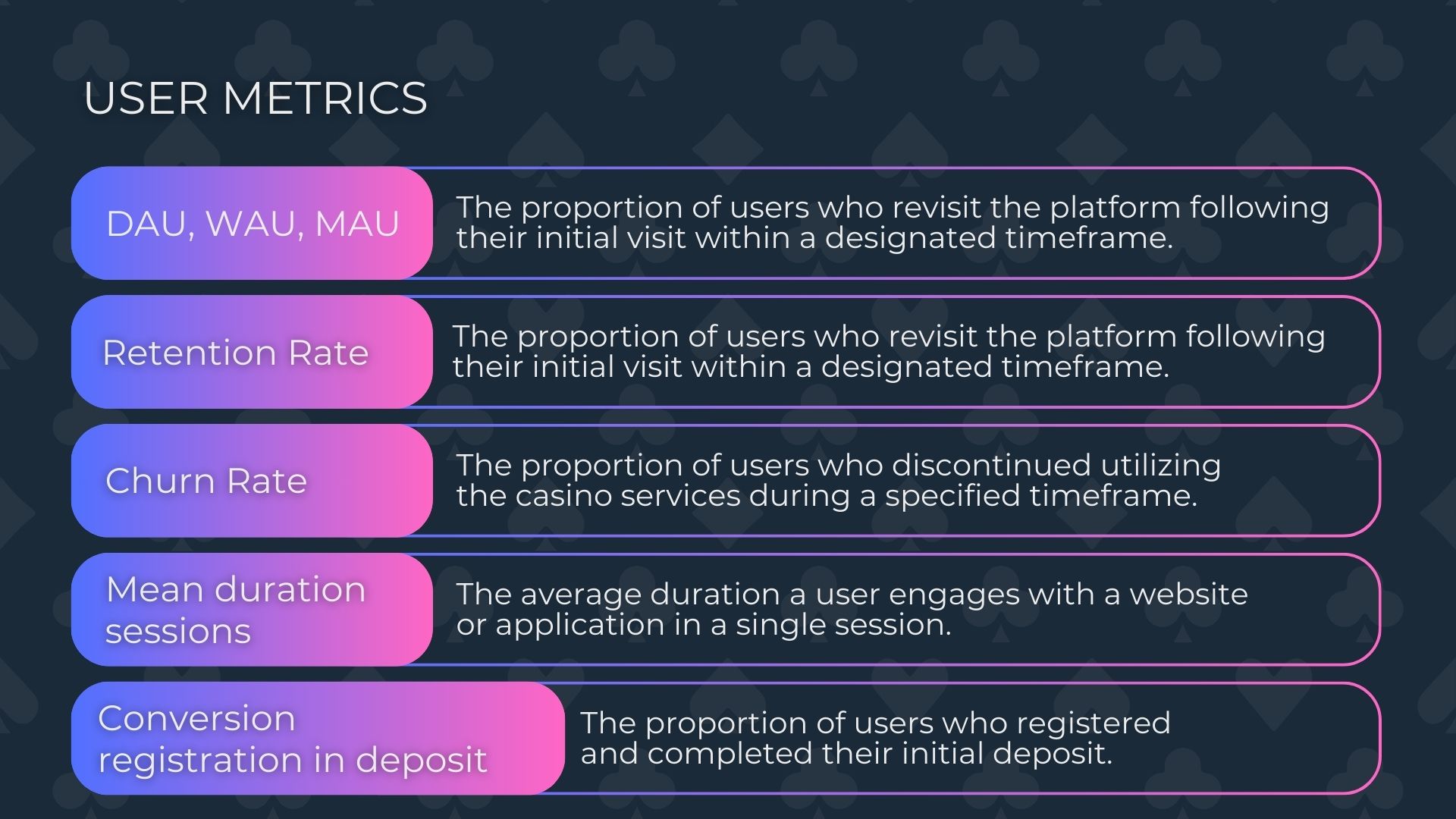
DAU, WAU, MAU
Active user metrics (Daily Active Users, Weekly Active Users, Monthly Active Users) illustrate audience engagement trends. These indicators help assess how frequently players return to the platform and how effectively retention mechanisms work.
Retention Rate
The retention rate measures the percentage of users who return to the platform after a specific period (1, 7, or 30 days). A high retention rate indicates an engaging gaming experience and high-quality service.
Churn Rate
The churn rate reflects the percentage of players who stop using the casino’s services. Analyzing this metric helps identify issues in the user experience and implement timely improvements.
Average Session Duration
The duration of a gaming session indicates user engagement levels. A longer session time may suggest high-quality content or, conversely, the need to buy new slot games or optimize the user interface.
Registration-to-Deposit Conversion
This metric evaluates the effectiveness of the sales funnel—how successfully new users transition from exploring the site to making a deposit. Optimizing this stage is crucial for monetization.
Financial Metrics
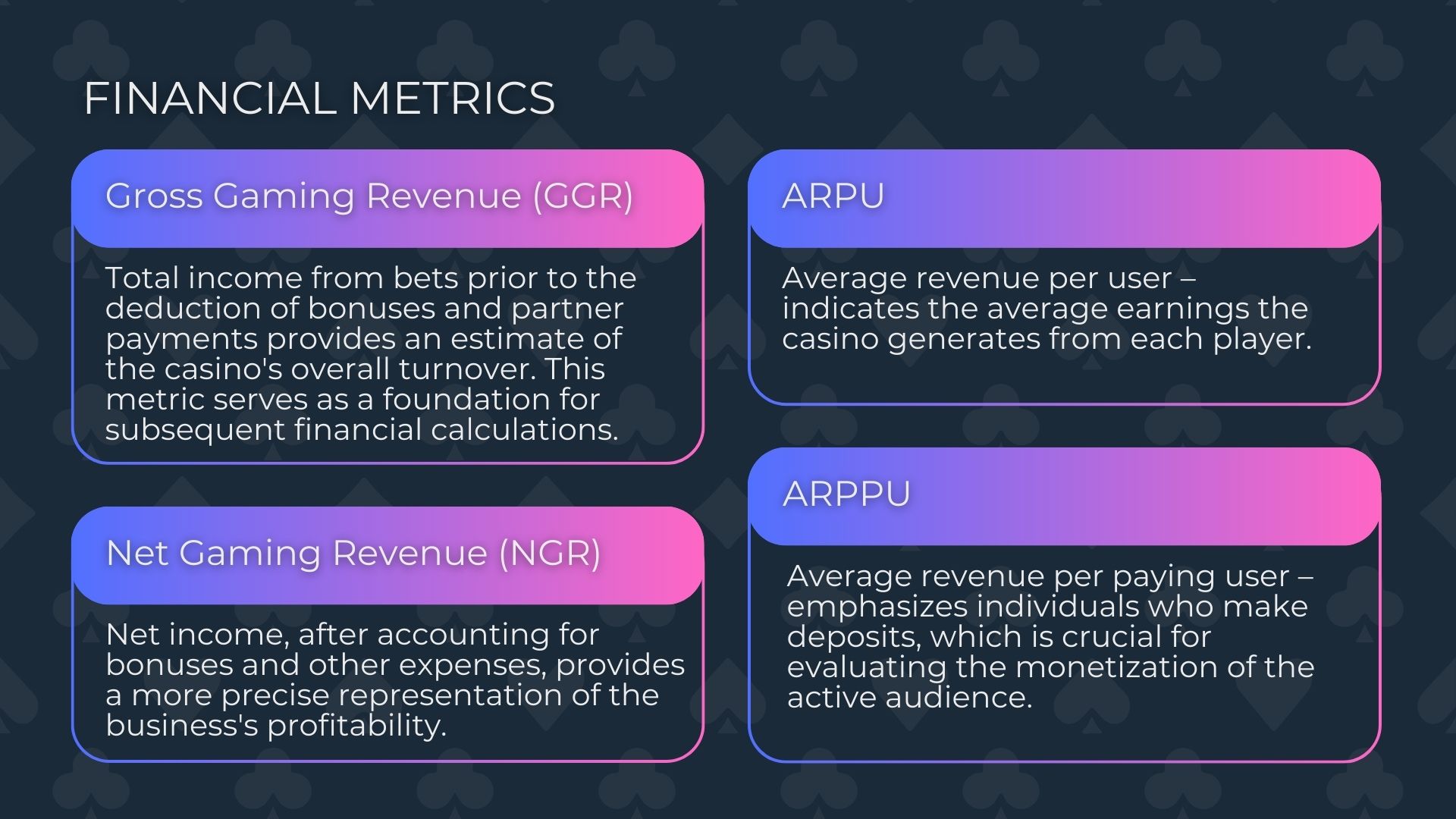
Gross Gaming Revenue (GGR)
The total revenue generated from bets before deducting bonuses and affiliate payouts provides an overall view of the casino’s turnover. This metric serves as the foundation for further financial calculations.
Net Gaming Revenue (NGR)
Net revenue, calculated after deducting bonuses, promotional payouts, and other expenses, provides a more accurate picture of business profitability.
ARPU & ARPPU
- ARPU (Average Revenue Per User): Represents the average earnings generated per user.
- ARPPU (Average Revenue Per Paying User): Focuses specifically on depositing users, making it a crucial metric for assessing monetization among active players.
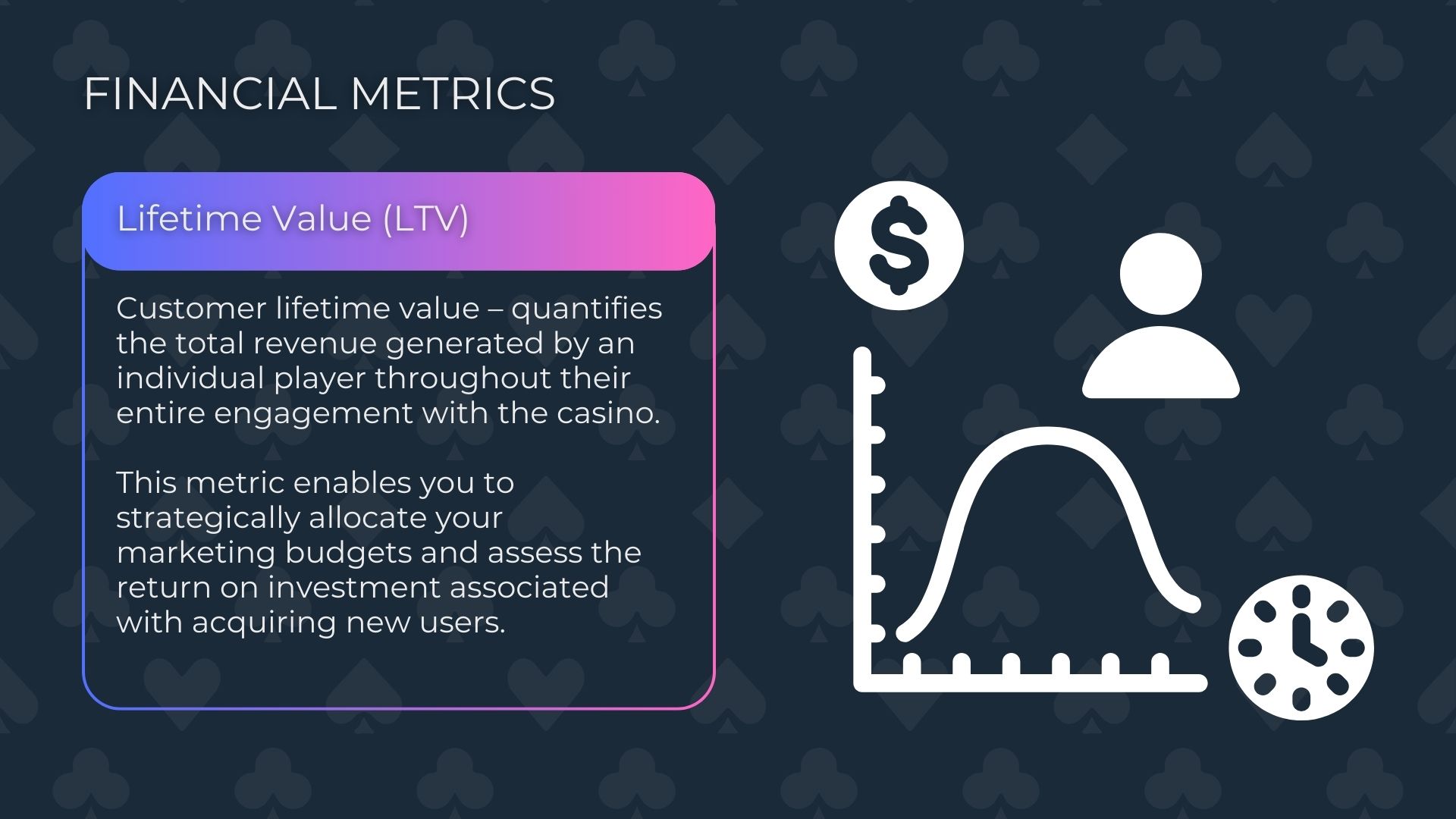
Lifetime Value (LTV)
LTV estimates the total revenue a single player generates throughout their engagement with the casino. This metric is essential for planning marketing budgets and evaluating the return on investment (ROI) in user acquisition.
Marketing Metrics
CPI, CPA, CAC
- Cost per Install (CPI): The cost of a single app install or website registration.
- Cost per Acquisition (CPA): The cost of acquiring a user who makes a deposit.
- Customer Acquisition Cost (CAC): The total expenses incurred in attracting one player.
These metrics help assess the efficiency of marketing campaigns and optimize spending.
ROI
Return on Investment (ROI) measures the profitability of marketing activities relative to the funds invested. A positive ROI indicates effective budget allocation.
Conversion Rate
Conversion rates at different stages of the funnel—from visits to registrations and deposits—help identify weak points and refine user acquisition and retention strategies.
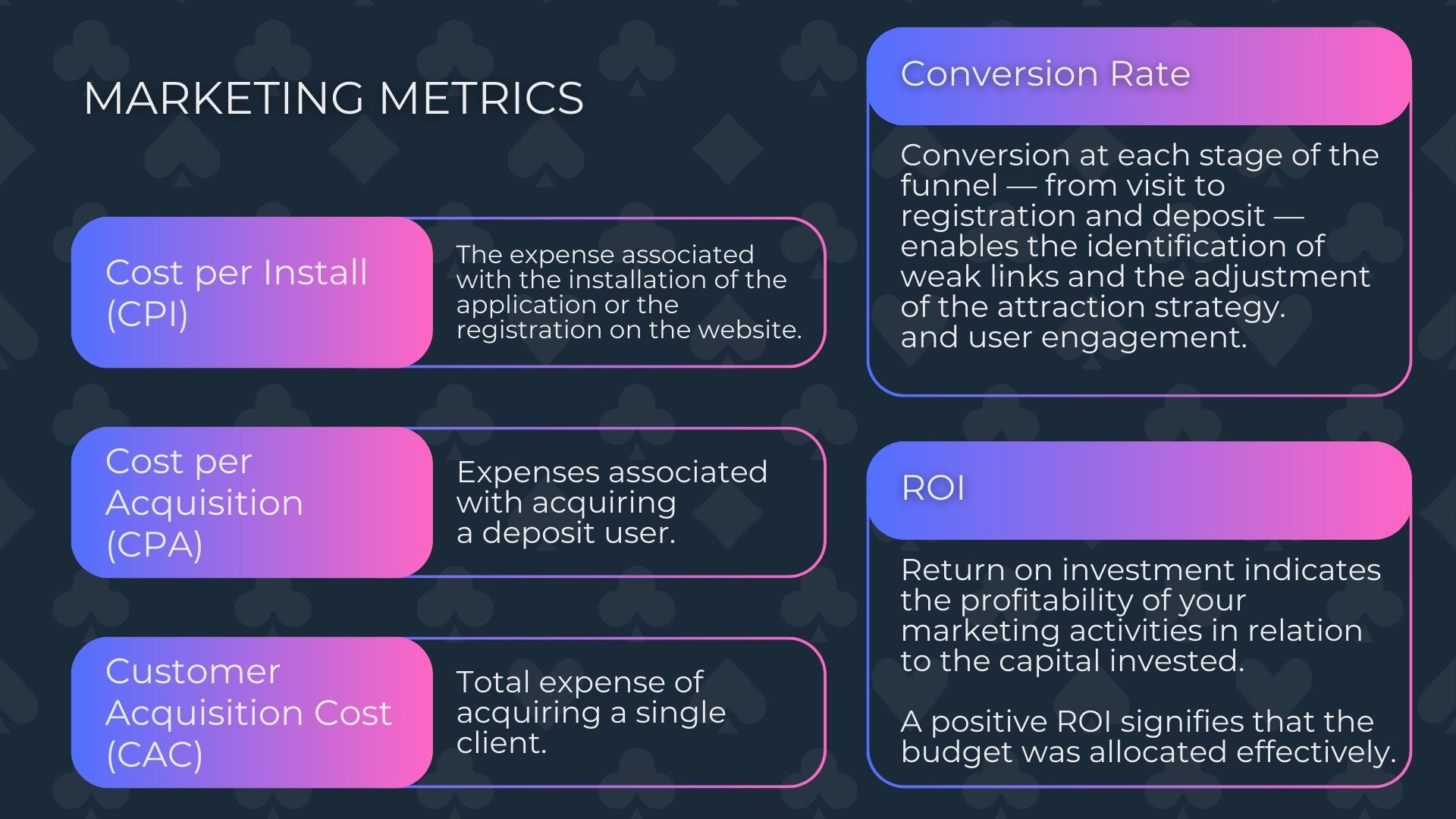
Operational Metrics
Average Payout Speed
Timely withdrawals are critical for maintaining player trust. Slow or inefficient payouts can damage a casino’s reputation and increase churn rates.
Successful Transaction Rate
The reliability of financial transactions directly impacts user satisfaction and compliance with regulatory requirements, which is crucial for maintaining a casino’s license. A high success rate indicates system stability.
Customer Support Request Frequency
Analyzing the number and reasons for customer support inquiries helps promptly address issues, improving service quality and player satisfaction.
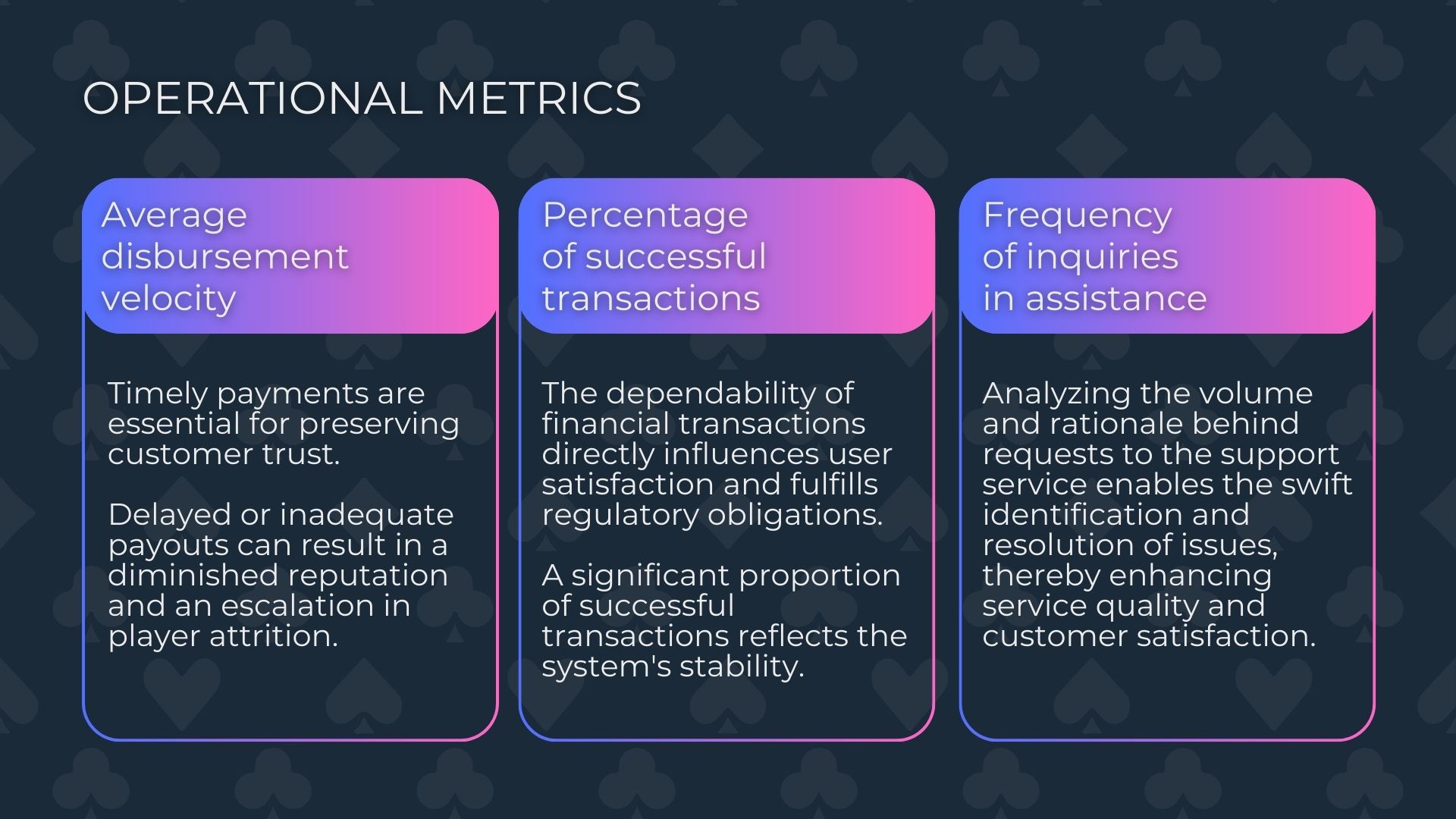
Analytics Tools and KPI Tracking
To collect and analyze data, online casinos use both built-in and external solutions:
- Built-in platform analytics: Many casinos develop proprietary tools to monitor user behavior and financial flows.
- External analytics platforms: Google Analytics, AppsFlyer, Firebase, and Business Intelligence (BI) systems enable in-depth data analysis and forecasting.
- Big Data and AI: Modern machine learning and big data analytics technologies help identify player behavior patterns and make strategic decisions based on forecasts.
Conclusion
Effective online casino management is impossible without continuous KPI monitoring. User engagement metrics, financial performance, marketing effectiveness, and operational data collectively form a comprehensive information framework that enables casinos to adapt to market changes and maintain a competitive edge.
Regular KPI analysis allows operators to respond to trends, optimize costs, and ultimately ensure stable business growth and profitability.
This article serves as a valuable guide for online casino owners and managers aiming for systematic and effective business development through in-depth data analysis.







